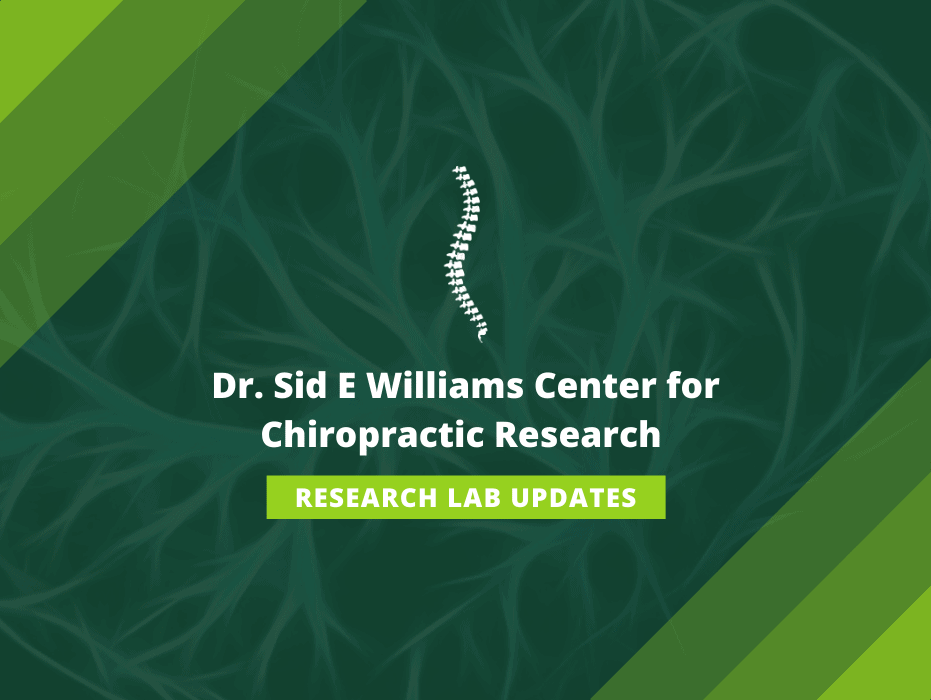The Dr. Sid E. Williams Center for Chiropractic Research (CCR) is getting into high gear this fall, and the research lab is excited to share a few updates and newly launched studies that are in study recruitment and data collection.
The PAT (Palpation and Adjustment Trainer) is complete and is getting use in the classroom. Faculty, staff and students are providing very positive feedback as the PATs are being utilized. Please be sure to check out the video at https://youtu.be/-StFUmdFMA0.
New research studies in recruitment:
- Perceived stress and patterns of autonomic function: a protocol development study
- Setting the groundwork for a line of research designed to evaluate changes in stress resilience with chiropractic care, this initial pilot study is looking at the relationship between autonomic function, stress state and frequency of chiropractic care.
- Angular kinematics of supine cervical spine adjustment: phase 2
- Supine cervical adjustments take place around the world as a common technique to adjust patients’ necks. There are cases where some patients exaggerate the motions that occur during this type of adjustment, and we have very little research showing the actual movement. In this study, we are looking at the motions during a supine cervical adjustment and comparing them to the doctors’ and patients’ perceptions. We also added in a force sensor, onto the chiropractor’s adjusting hand, to measure the forces that occur during the adjustment.
Studies already collecting data:
- A randomized wait-list control trial evaluating the effect of team-based applied clinical neuroscience care on self-reported symptoms of depression and cerebellar function in adults with medication-resistant depression
- This is a pilot study design that operationalizes the multimodal manner of care employed in chiropractic applied clinical neuroscience, while evaluating changes in depression symptoms, dysmetria, and balance for medication non-responders.
- Effectiveness of chiropractic care on a healthy population as assessed by balance and dual task performance analysis
- This is a study utilizing the NeuroCom Balance System to evaluate a participant’s balance following a chiropractic adjustment. This study assesses focused balance and balance during an increased cognitive load.
- Does chiropractic care change post-stroke ADLs and brain activation patterns?
- Stroke, whether ischemic or hemorrhagic, can culminate in devastating clinical outcomes due to differences in pathophysiologic and possibly long-term cerebral and functional differences. Because of the limited research that has examined the functional outcomes between the two different stroke subgroups, the purpose of this proposed research is to evaluate the brain activation patterns and self-reported symptoms following 12 weeks of chiropractic care in individuals with ischemic versus hemorrhagic stroke released from post-stroke rehabilitative care.
Founder’s Month for Research is a 30-day campaign in the Month of September centered around the founding date of Chiropractic: September 18, 1895. This year marks the 125th Anniversary of the profession, and to celebrate, Life University has dedicated the entire month to raising resources and awareness for Chiropractic research. Celebrate Chiropractic’s Founder’s Day and donate today to help us translate the Vitalistic principles of Chiropractic into the language of research. To learn more, please visit: LIFE.edu/Founders-Month.


Social Media